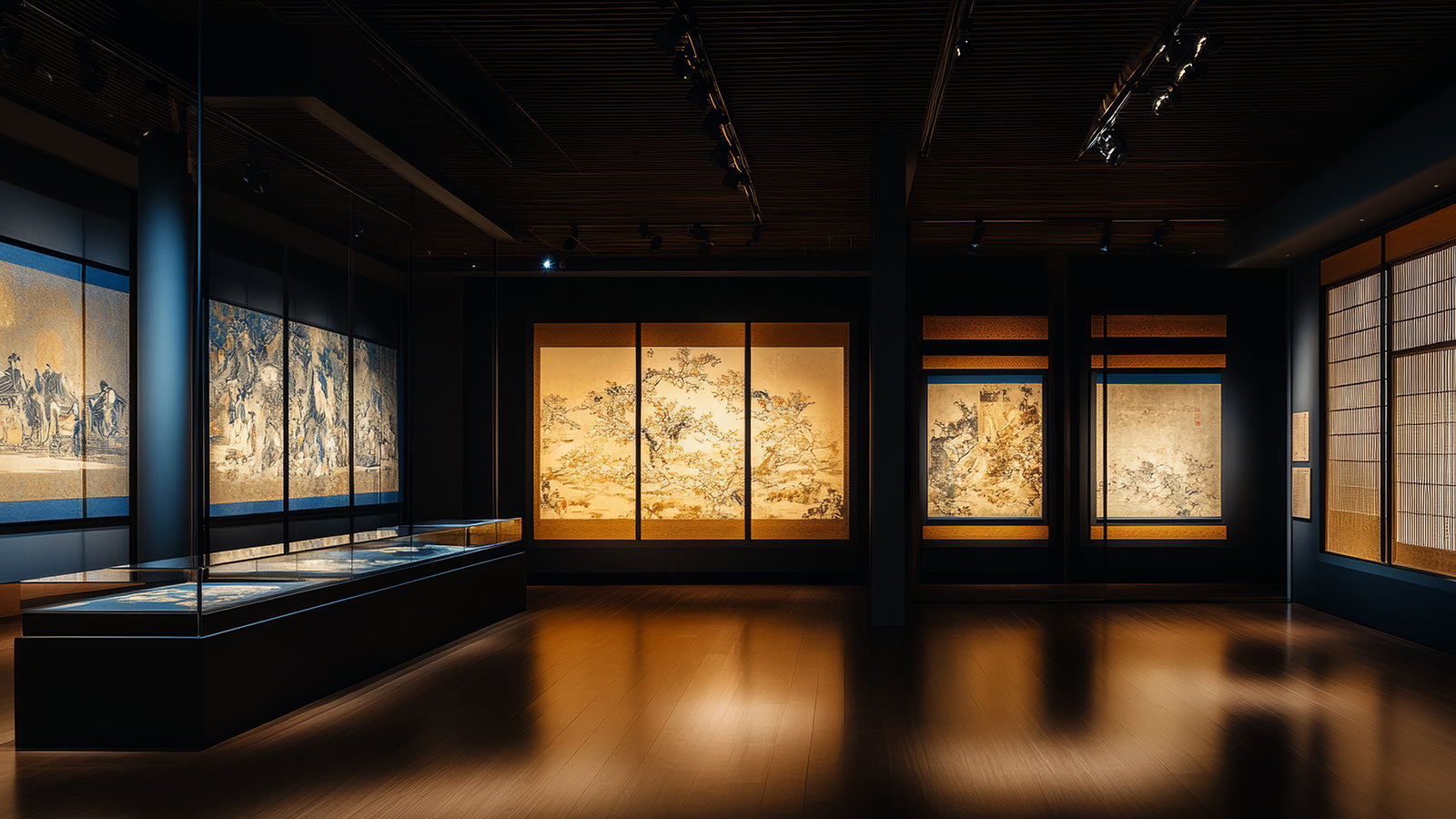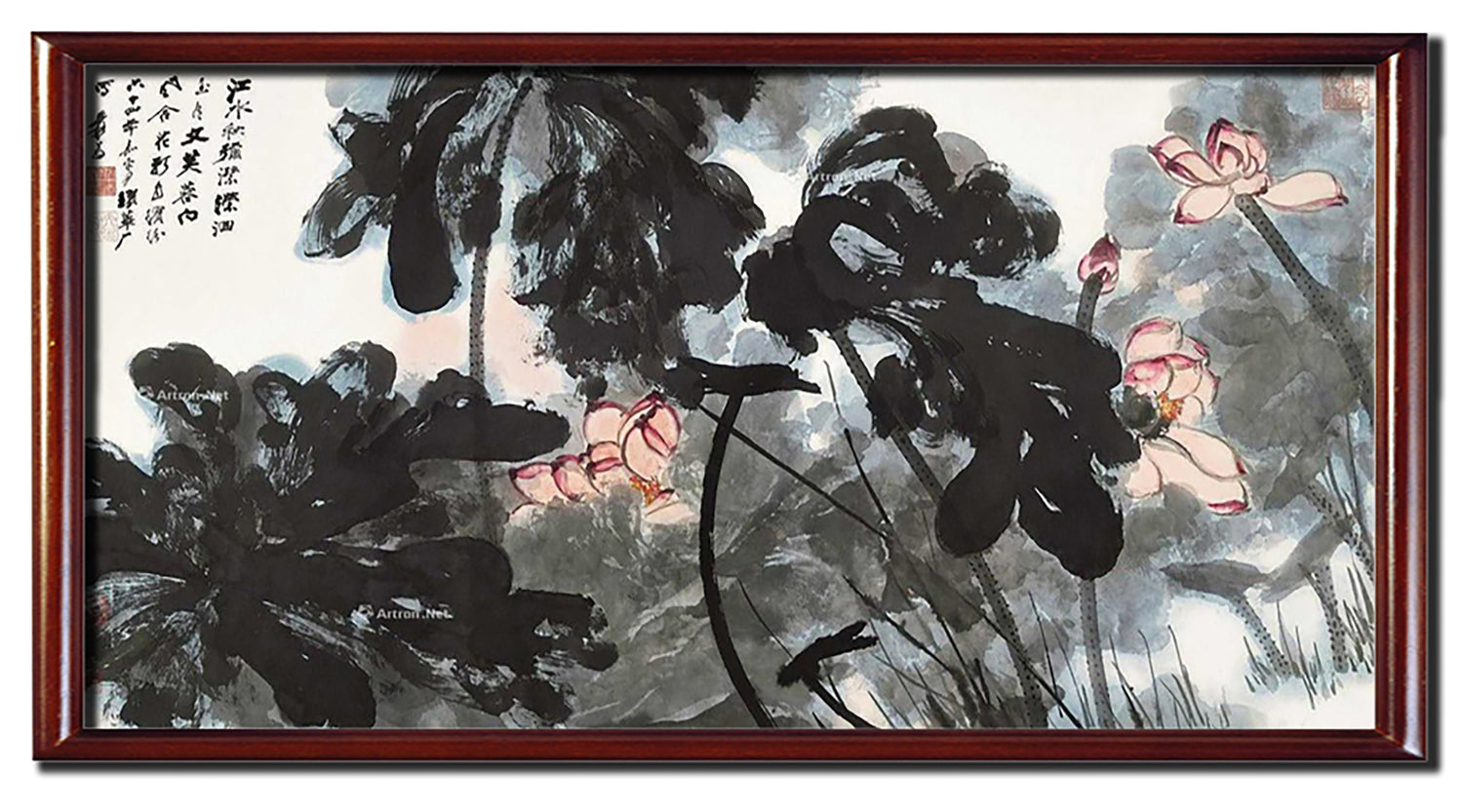
A Gathering of Eastern Aesthetics
From the grandeur of Han and Tang dynasties to contemporary meaning, inheriting the millennia-old beauty of Eastern art
-

Calligraphy Works
Learn MoreRooted in the five major calligraphic styles—seal, clerical, standard, running, and cursive script—the dynamic interplay of lifting, pressing, and pausing the brush reveals the steely spirit of stone inscriptions. The varying richness of ink outlines the calligrapher’s temperament. Characters are composed with a balance of density and openness, the structure flows with rhythm, combining the strength of chiseled strokes and the elegance of flying white, allowing viewers to sense a thousand years of literary rhythm in every brushstroke.
-

Portrait Works
Learn MoreDelicate line drawing defines forms, while subtle coloration brings them to life. Flowing garments reveal inner character, and expressive eyes convey deep emotion. Traditional forms resonate with spirit, reviving the aesthetic ideal of "capturing spirit through form" across time and space, with an energy that bridges past and present.
-

Floral and Bird Paintings
Learn MoreA fusion of meticulous gongbi technique and expressive freehand style, the delicate brushwork imbues flora, fauna, and birds with a lively spirit, while subtle washes of color breathe natural vitality into the scene. The fragrance of blooming flowers and the songs of birds are captured on paper, transforming the refined elegance of literati into the interplay of ink’s illusion and reality, inviting viewers to step into a realm of artistic wonder.
-

Landscape Works
Learn MoreSplashing and rubbing techniques inherit ancient methods, using the varying shades of ink to create robust mountain forms, while reserved spaces of clouds and mist evoke ethereal emptiness. Within a single scroll lies a world for both living and wandering. Viewers follow the brush and ink deep into the woods and springs, attaining the Eastern philosophical ideal of roaming the universe and contemplating the Dao with a clear mind.

Grandeur of the Han and Tang Dynasties
Han and Tang art opens and closes like rivers and mountains—bronze patterns exude refined solemnity, and Dunhuang murals soar with splendor. It revives the rustic power of Han dynasty clerical script and the majestic atmosphere of Tang dynasty blue-green landscapes, reimagines the grand scale of the "Mingtang Diagram" and the vigor of Han Gan’s horses. Especially suited for display in tall, open spaces—a single painting can command the entire hall, filling the room with dignity and presence.

Song and Yuan Artistic Essence
Song dynasty landscapes invite both wandering and dwelling, while Yuan artists’ ink play emerges with spontaneous naturalness. Inheriting the Li-Guo school’s clear expanses of wintry forests and snowy vistas, and the Mi family’s misty mountains and rainy clouds, the paintings render birds and flowers vividly yet with lively spirit. Unrolling Zhao Mengfu’s "Autumn Colors on the Que and Hua Mountains" on your desk, or hanging a vertical scroll in the style of Ni Zan’s sparse pavilions and woods, as tea smoke curls, you seem to glimpse travelers in the painted rivers and mountains—perfect for evoking a touch of Zen in a study or tearoom.

Elegance of the Ming and Qing Dynasties
Ming and Qing art blends tradition with innovation—showcasing both the courtly splendor and meticulous detail of imperial bird-and-flower painting, and the lofty simplicity of Bada Shanren’s ink lotuses. It recreates the brilliance of Qiu Ying’s blue-green pavilions and the unique elegance of Zheng Banqiao’s bamboo and rocks, with gold-flecked paper and ink colors exuding royal grandeur. These works are ideal as auspicious displays in corporate lobbies, add scholarly charm to refined homes, or serve as elegant housewarming gifts in the style of the Four Masters of Wu—embodying the pinnacle of Eastern aesthetics within a limited space.

Modern Chapters
Modern and contemporary art is reborn from millennia of cultural heritage: Wu Changshuo infused painting with the power of seal carving, unleashing bold vitality; Xu Beihong introduced Western realism to open new horizons in sketching; Lin Fengmian wove together color and ink to create a modern Eastern style. Drawing on the ingenuity of the Shanghai school and the dramatic water effects of Lingnan, the splashed colors on xuan paper evoke the rhythmic dynamism of Wu Guanzhong. These works cater to the new elite collectors seeking to "verify history through art," transforming a century of change into spiritual icons for modern spaces.
Jiuzhou Moge's Blog
View all-

Bada Shanren's "White Eyes": Decoding the Arrog...
Bada Shanren (Zhu Da) is renowned for his paintings of fish, birds, and animals rolling their eyes. This is not only a unique form, but also a silent expression of...
Bada Shanren's "White Eyes": Decoding the Arrog...
Bada Shanren (Zhu Da) is renowned for his paintings of fish, birds, and animals rolling their eyes. This is not only a unique form, but also a silent expression of...
-

A Complete Analysis of the Raindrop Cunning Tec...
"Traveling in Mountains and Rivers" is the pinnacle of Northern Song Dynasty landscape painting. Its breathtaking grandeur is the result of Fan Kuan's unique "raindrop texture" technique. This article will...
A Complete Analysis of the Raindrop Cunning Tec...
"Traveling in Mountains and Rivers" is the pinnacle of Northern Song Dynasty landscape painting. Its breathtaking grandeur is the result of Fan Kuan's unique "raindrop texture" technique. This article will...
-

From "Huang's Wealth" to "Xu Xi's Wildness": An...
In the glittering canyon of Chinese art, flower and bird painting from the Five Dynasties period (907-960) undoubtedly stands as a shining star. Breaking free from its subordinate role as...
From "Huang's Wealth" to "Xu Xi's Wildness": An...
In the glittering canyon of Chinese art, flower and bird painting from the Five Dynasties period (907-960) undoubtedly stands as a shining star. Breaking free from its subordinate role as...
-

Tang and Song Dynasty Landscape Painting: A Sum...
For Chinese art lovers, collectors, and students, the Tang and Song dynasties are two unavoidable peaks. While the landscape paintings of these two dynasties share a common heritage, they exhibit...
Tang and Song Dynasty Landscape Painting: A Sum...
For Chinese art lovers, collectors, and students, the Tang and Song dynasties are two unavoidable peaks. While the landscape paintings of these two dynasties share a common heritage, they exhibit...
Subscribe to Our Emails
Be the first to receive updates on new collections and exclusive offers.









